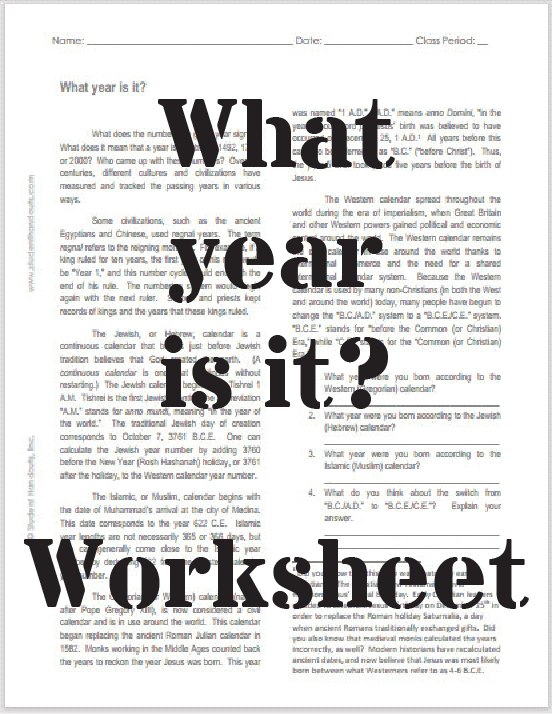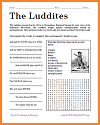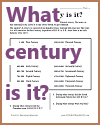What Year Is It? Worksheet |
| www.studenthandouts.com > Social Studies > Social Studies Handouts |
 What does the number of a given year signify? What does it mean that a year is numbered 1492, 1776, or 2000? Who came up with these numbers? Over the centuries, different cultures and civilizations have measured and tracked the passing years in various ways.
What does the number of a given year signify? What does it mean that a year is numbered 1492, 1776, or 2000? Who came up with these numbers? Over the centuries, different cultures and civilizations have measured and tracked the passing years in various ways.Some civilizations, such as the ancient Egyptians and Chinese, used regnal years. The term regnal refers to the reigning monarch. For example, if a king ruled for ten years, the first year of his rule would be "Year 1," and this number cycle would end with the end of his rule. The numbering system would begin again with the next ruler. Scribes and priests kept records of kings and the years that these kings ruled. The Jewish, or Hebrew, calendar is a continuous calendar that begins just before Jewish tradition believes that God created the earth. (A continuous calendaris one that continues without restarting.) The Jewish calendar begins on 1 Tishrei 1 A.M. Tishrei is the first Jewish month. The abbreviation "A.M." stands for anno mundi, meaning "in the year of the world." The traditional Jewish day of creation corresponds to October 7, 3761 B.C.E. One can calculate the Jewish year number by adding 3760 before the New Year (Rosh Hashanah) holiday, or 3761 after the holiday, to the Western calendar year number. The Islamic, or Muslim, calendar begins with the date of Muhammad's arrival at the city of Medina. This date corresponds to the year 622 C.E. Islamic year lengths are not necessarily 365 or 366 days, but one can generally come close to the Islamic year number by deducting 622 from the Western calendar year number. The Gregorian (or Western) calendar (named after Pope Gregory XIII), is now considered a civil calendar and is in use around the world. This calendar began replacing the ancient Roman Julian calendar in 1582. Monks working in the Middle Ages counted back the years to reckon the year Jesus was born. This year was named "1 A.D." ("A.D." means anno Domini, "in the year of our Lord"). Jesus’ birth was believed to have occurred on December 25, A.D. 1.[1] All years before this came to be referred to as "B.C." ("before Christ"). Thus, the year 5 B.C. took place five years before the birth of Jesus. The Western calendar spread throughout the world during the era of imperialism, when Great Britain and other Western powers gained political and economic control around the world. The Western calendar remains the civil calendar in use around the world thanks to international commerce and the need for a shared international calendar system. Because the Western calendar is used by many non-Christians (in both the West and around the world) today, many people have begun to change the "B.C./A.D." system to a "B.C.E./C.E." system. "B.C.E." stands for "before the Common (or Christian) Era," while "C.E." stands for the "Common (or Christian) Era." [1] Did you know that this date was created by early Christians? The Christian New Testament never mentions Jesus’ actual birthday. Early Christian leaders decided to celebrate Jesus’ birthday on December 25th in order to replace the Roman holiday Saturnalia, a day when ancient Romans traditionally exchanged gifts. Did you also know that medieval monks calculated the years incorrectly, as well? Modern historians have recalculated ancient dates, and now believe that Jesus was most likely born between what Westerners refer to as 4-6 B.C.E. |
|
Questions (answers will vary): 1. What year were you born according to the Western (Gregorian) calendar? 2. What year were you born according to the Jewish (Hebrew) calendar? 3. What year were you born according to the Islamic (Muslim) calendar? 4. What do you think about the switch from "B.C./A.D." to "B.C.E./C.E."? Explain your answer. Click here to print. |
 |
| www.studenthandouts.com > Social Studies > Social Studies Handouts |











